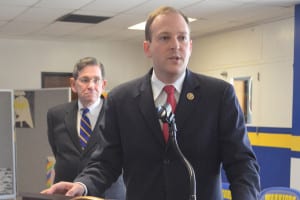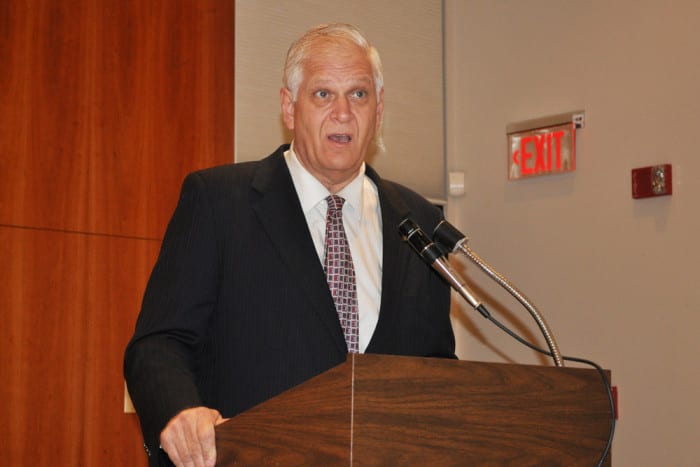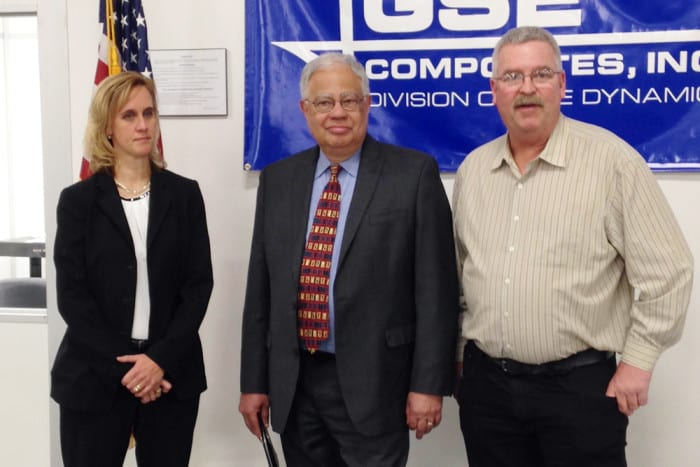Congressman Lee Zeldin announced to Comsewogue teachers, parents and students on Sunday that he is working on a way to reduce state testing, amid a renewed local push against the standardized exams.
The Student Testing Improvement and Accountability Act, which Zeldin (R-Shirley) is co-sponsoring, has “strong bipartisan support,” he told the crowd at Comsewogue High School. “This legislation would roll back state-mandated testing to pre-No Child Left Behind levels.”

The federal No Child Left Behind Act of 2001 required states to create assessments for basic skills in select grade levels. Before the controversial No Child Left Behind, New York State students were tested in both English language arts and math in three different grades, for six total tests. Now students take those exams each year in grades three through eight.
The Student Testing Improvement and Accountability Act aims to reduce the number of tests to previous levels — so they would be administered once in grades three to five, once in grades six through nine and once in grades 10 through 12 — based on the belief that it would allow for more curriculum flexibility, giving students more time to learn and helping to nurture their creativity.
Gina Rennard, a Comsewogue parent and wife of school board trustee Rick Rennard, has had her children “opt out” of the standardized tests, something many parents have done in opposition to the Common Core Learning Standards and linked state tests.
“These tests are developmentally inappropriate,” Gina Rennard said. “The grades for these tests come out after the students have already gone onto the next education level, therefore the tests have no bearing on their education plan. So why are we torturing them?”
Superintendent Joe Rella hosted the press conference, and said the only goal of testing is “to put public schools out of business and have [charter schools] for profit, because there is nothing about improvement here.”
Rella said he will not stop fighting for change.
The gathering came just a couple of weeks after Rella and Comsewogue school board members considered a proposal to refuse to administer state exams unless the state delivered more education aid and reduced the weight of student test scores on teacher and administrator evaluations. But after the idea created buzz in the community, the officials nixed the proposal on the advice of legal counsel.

State Education Law gives the education commissioner power to remove school officials from office if they willfully disobey rules or regulations, and withhold state aid from schools where such action takes place.
Patchogue-Medford Superintendent Michael Hynes said at the event that the pressure on both students and teachers is far too intense.
“If you look at countries whose education systems are performing well, they are doing the opposite of what we’re doing right now,” Hynes said. The crowd roared in agreement.
Jennifer Jenkins moved her family to Comsewogue because of the schools, but said she is no longer confident in the education her kids are getting.
“To have so much of the curriculum based on the testing forces the teachers to focus on standardized testing as a part of the year’s goal,” she said. “Then the teachers have less of an opportunity to build their own curriculum around what’s best for their individual students.”
Zeldin said he is optimistic about the bill’s future in Congress.
“This is where you hold your elected officials accountable, and we will make sure we are doing everything within our power up in Albany and down in Washington to do it on behalf of these kids.”










